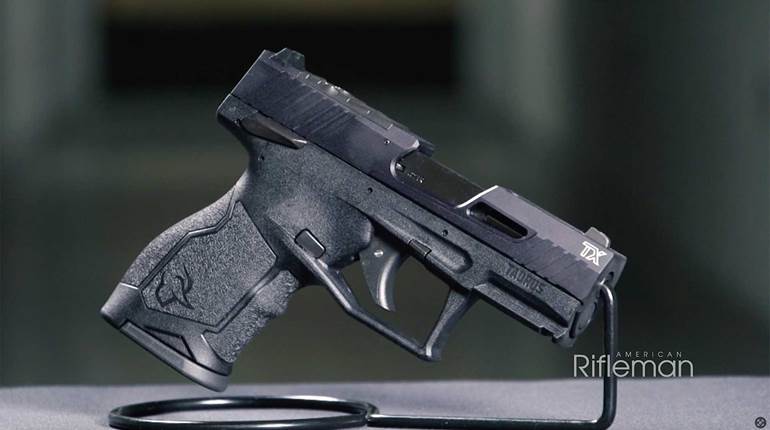At the beginning of World War II, the German Luftwaffe was at its height, and for aircrews that might find themselves downed in the wilderness or behind enemy lines, a firearm was necessary for survival and defense. For that, the M30 Luftwaffe drilling was adopted, and it remains as one of the finest military arms ever issued in any capacity. Watch our "American Rifleman Television" I Have This Old Gun segment above to see the details of this military drilling.
"Even though Herman Goering was an odious character, he was also in charge of the German ministry of forests. He was a hunter," NRA Publications Editorial Director Mark Keefe said. "And when the Luftwaffe needed a survival gun, he selected the Sauer drilling."

Unlike many military arms, which were built with simplicity and utility in mind, Goering selected a rifle from one of the finest sporting-arms manufacturers in Germany.
"He just couldn't have something simple. No, he went to one of the finest gun makers in Germany, J.P. Sauer and Company, went through their catalog, found one of their terrific, beautiful, gorgeous drilling sporting rifles, and decided that would be exactly what would be right for his men of the Luftwaffe," American Rifleman Field Editor Garry James said. "The name drilling actually comes from the word drei. Which means three, because it basically had three barrels."
The actual gun selected by Goering was a commercial model that had been in Sauer's lineup prior to the start of World War II, and the gun had been retailed in the United States before the onset of war.

"The gun itself is known in the Sauer catalog as the Model 30, and it's quite a nice gun," Keefe said. "When you look at pre-war catalogs, you know, the Model 30 was brought in sometimes with the Sauer name and also other makers. It cost $375 in 1938. You can get a brand-spanking-new Model 70 for $60. This was not an inexpensive gun."
Though there were many kinds of drillings made and used in Germany and elsewhere around the world, the Model 30 selected by Goering for Luftwaffe use had a particular kind of construction.

"Drillings were in a number of variations. Sometimes they'd have two rifle barrels. Sometimes they'd have two shotgun barrels and one rifle barrel. So there were considerable variations," James said. "But this particular one, which was eventually adopted as the M30, had a rifle barrel chambered in 9.3x74R, which was a very good popular sporting round of the period. One of the barrels was designed to shoot Brenneke slugs and the other barrel was designed to shoot regular shotgun shells."
During their military use, it wasn't just the guns that were issued to air crews. Along with the finely finished sporting arms, an assortment of extra field gear was also issued.

"These guns are issued to Luftwaffe air crews in this gigantic 32-lb. crate. And you've got the rifle itself broken into its component parts. And you've got a number of shotshells, and a number of rifle shells, and you've got your sling and a cleaning kit and everything you need to survive in the wilderness," American Rifleman Executive Editor Evan Brune said. "The thing that is unique about the drilling is that most survival-style guns that you see are very sparse, very utilitarian. The Luftwaffe drilling is the absolute opposite of that. They made just over 2,000 of these things, almost 2,500 of these guns, for issue to Luftwaffe air crews. And the guns have features on them that you just don't expect in a military-issue firearm."
To watch complete segments of past episodes of American Rifleman TV, go to americanrifleman.org/artv. For all-new episodes of ARTV, tune in Wednesday nights to Outdoor Channel 8:30 p.m. and 11:30 p.m. EST.























